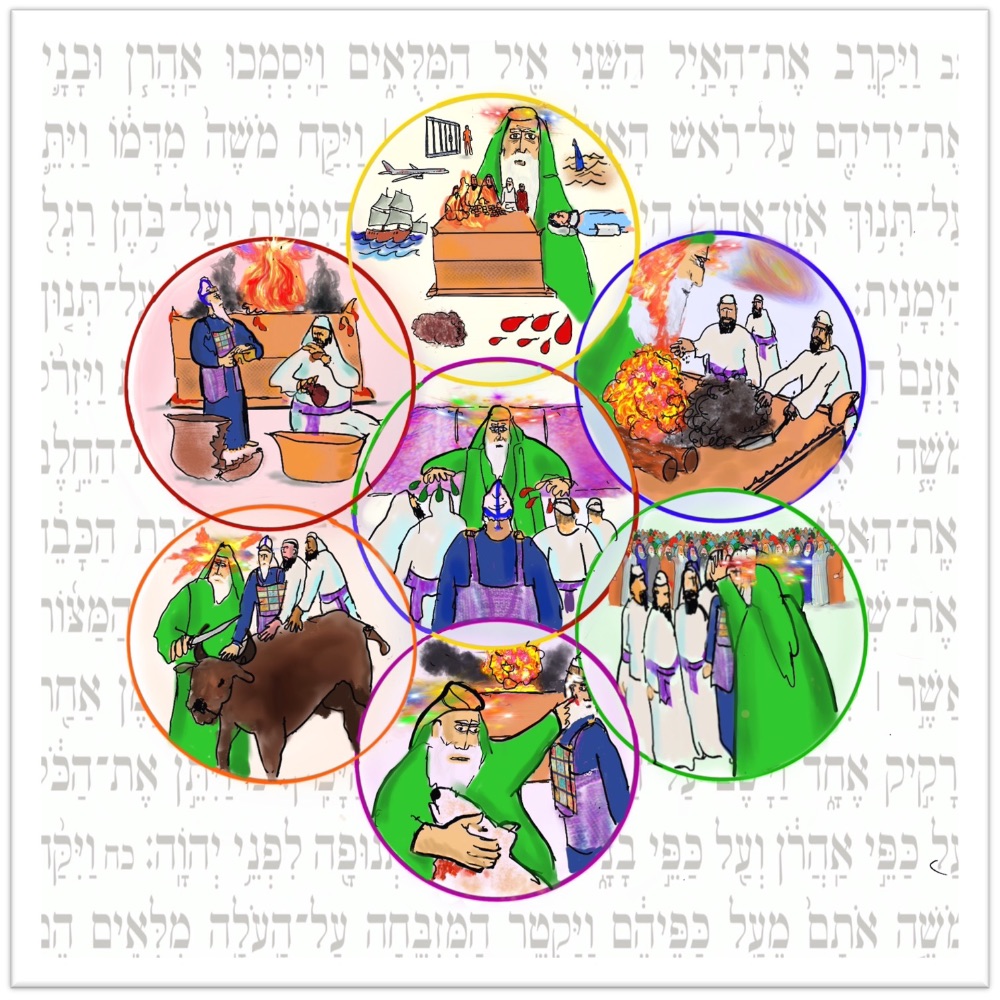
The seven Aliyahs of Tzav
This is a continuation of the sacrificial processes. Still a challenge for our times, but the symbolic concept that these animals are substitutes for us and that we daily have the opportunity to appreciate the gifts of life to us from Hahsem.
top right – Moses passes on what he has been told by Hashem including the daily removal of the ashes reminding us that there is a blessing in cleaning up our acts. The fire was to never be put out – as our passion for connection too shouldn’t be put out – and there was a meeting of the fire from above and the fire from below and that when we are sincere our flames take the form of a lion’s head
top left – Here the high priest Kohen Gadol in his induction is to make the same sacrifices as one who might not have possessions thus equating him to all. And the priests are allowed to eat some of the sacrifices for their service. And contamination of earthenware vs copper containers as some objects can be cleaned and others will never be cleaned, that the infection remains, and the vessels needs to be broken. Interesting implications here!
top center – Moses speaks to what is called the thanksgiving offering which anyone can make and for surviving travel, getting out of prisons and traps, crossing a desert, recovering from an illness. We are told what meats can be sacrificed and that the food is to be shared that day and that we are not to consume blood.
bottom right – Moses dresses Aaron and his sons to be the high priests in front of the entire congregation.
bottom left – Moses sacrifices a bull with Aaron and his sons participating placing their hands on the animal.
bottom center – Moses sacrifices a ram and ritualistically places blood on parts of Aaron like his earlobe as signs that you should listen with a heart of compassion. These animals stand in for us.
center center – Moses initiates the priests before the Mishkan with oil and blood mixing the sacred and profane.